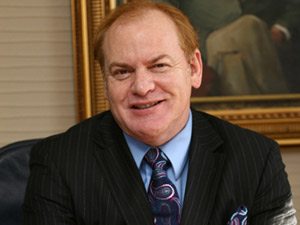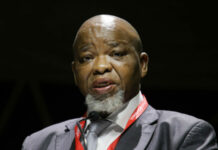
[miningmx.com] – THE expectation among mining analysts is that 2014 will be a period of consolidation for the resources sector with management having to deliver on the cost-cutting strategies that dominated headlines last year.
That’s easier said than done for some CEOs. Here’s a list of some of the most vulnerable CEOs for whom 2014 is a year of “stand and deliver’.
Nick Holland
CEO, Gold Fields
12-month return -61%
It’s more than a year since Gold Fields CEO, Nick Holland, unbundled the firm’s strike-torn South African mines, a piece of corporate activity that was supposed to add a touch of vim to Gold Fields as it – supposedly – shed its South African discount.
In that time, however, the company has lost more ground than any other South African gold stock, including Harmony Gold (-60%) which is ironic as Harmony is the Johannesburg gold stock most exposed to South Africa.
The other irony is that Sibanye Gold, the company created to house the mines unbundled from Gold Fields, has been the best performing South African gold stock, which is only 5% off its year high. It debuted on the JSE in February.
As a result, Holland is a CEO under pressure, professionally and personally. His name has also become the by-word for executive excess. Despite the share under-performance, Holland’s 39% executive pay increase last year enraged Government, unions, and investors.
Holland also has to contend with the outcome of an investigation into the firm’s much-criticised empowerment deal at the South Deep mine by the US Securities & Exchange Commission.
Holland has bought Australian gold mines from Barrick Gold, rejigged the portfolio, restructured management responsibilities, and shored up the balance sheet in an effort to survive the weaker gold price.
Yet these measures, and promises that Gold Fields will deliver the 700,000 oz/year South Deep mine – the company’s flagship project – could all be for naught if the SEC
finds Holland has contravened the US Foreign Corrupt Practices Act. Holland has declared himself keen to carry on: will shareholders or the regulators allow him?
James Allan
Sable Metals & Minerals CEO
12-month return -48%
James Allan is finding that running a company more hazardous than analysing or servicing one. That’s the trade-off he made when he swapped a career as an analyst, corporate financier and drilling company owner for that of mining CEO.
Sable’s basic problem has been securing finance in a market that is not well disposed to cash-hungry exploration and development firms. Allan, who listed Sable Platinum months after the Marikana murders, thought the platinum market would have recovered in 18 months, but he concedes that may have been optimistic.
As a result, the company has changed its name and broadened its scope to include vanadium and iron, the latter as a consequence of a deal in which Sable hopes to derive some near-term cash flow by re-mining nickel dumps for iron in Botswana.
In the meantime, Sable Metals has to stay afloat. It may, therefore, issue shares before the end of its current financial year, and then again in the next financial year. So much turns on investor faith which Allan can do much to improve by making a success of the iron ore transaction in Botswana.
Mark Cutifani
Anglo American CEO
12 month return -16%
Australian Mark Cutifani’s job is hardly in doubt but the seeds of his success (or failure) in turning Anglo American around are being sown now. This follows a review of the group’s assets which took the best part of a year in 2013 to complete.
By April, Cutifani will have been in the job a year and must show early succes in respect of criteria about which he has been refreshingly plain: return on capital employed must exceed 15% in order for the group to break-even, for instance.
Anglo’s platinum business, Anglo American Platinum (Amplats) must start to show in July or August, when it reports interim figures, that the controversial restructuring was a substantial intervention, and that Kumba Iron Ore can grind out a result at its Sishen Iron Ore property.
Anglo’s share price is approximately where it was when Cutifani took over the company with some analysts saying the good news communicated in two investor feedback sessions was already “in the price’.
Assisted by stable copper and iron ore prices, and a weakened rand helping to bolster improving platinum revenues, this could be a good year for Cutifani.
Yet if the market turns against him, so may investors who have time and again been disappointed by Anglo’s proposed turnaround plans. Already, analysts have commented that Cutifani needs to act deftly and decisively in order to dismiss the suspicion that he is only a good talker.
Ferdi Dippenaar
Village Main Reef CEO
12 month return -68%
Having dismissed a bid of R400m from a businessman with interests near Village Main Reef’s (VMR’s) closed or mothballed gold mines, Dippenaar must show why he is the best person to turn the company’s remaining assets to account.
It will be tough because VMR’s extant assets – Consolidated Murchison, a mature antinomy and gold producer, and Tau Lekoa, a gold mine in the Orkney region – have both been prone to mishaps.
If all goes well, VMR can generate R100m in free cash flow from Tau Lekoa but a few days downtime in the fourth quarter related to safety related stoppages, and the traditionally slow seasonal activity mean VMR may have to wait until the first quarter of this year to start showing its best form.
For Dippenaar personally, he will have to put in a sustained and strong performance at VMR in order to dismiss the scepticism of those who remember him having spent C$561m developing the now mothballed Burnstone gold mine.
Shares in VMR have been on a one-way slide since 2012 when they were trading at R2.50/share compared to the 40c/share today.
On a 12-month return basis, the stock is down 68%. In a gold market which is tending towards bearishness, it will only take two quarters of under-performance, to put Dippenaar back under the microscope again.
Jean Nel
Aquarius Platinum CEO
12 month return -26.5%
One analyst remarked after Jean Nel presided over highly creditable interim results last year that perhaps this was “as good as it’s going to get’ for Aquarius Platinum, a company that has booked a negative 26.5% return over the last 12 months.
The irony about pin-pointing 2014 as a year for delivery for Nel is that he’s already delivered, substantially in 2013. He surely saved the company by brutally ratcheting down costs, and even managing a small improvement in the company’s cash resources in its 2013 financial year.
Yet it’s an gauge of how difficult operating is for Aquarius Platinum that Nel will be required to achieve more cost-savings – in the region of 30% to 40% – in the current financial year, and hope that the basket price for platinum group metals improves.
Nel has raised the prospect that Aquarius could use its own cash generation to help pay back a $300m convertible bond. Although only due in 2015, the spectre of the bond repayment will make investors nervous, especially if Aquarius fails to report the required cost-savings which raises the risk of a costly refinancing of the bond. Liberum Capital has already commented that the platinum price would have to improve 44% off last year’s levels before Aquarius could pay shareholders out (in the absence of more cost-savings).
Over and above these concerns, Aquarius Platinum is also affected by the Zimbabwean government’s capricious approch to its empowerment regulations, known as indigenisation.
The key question for Nel is how much more blood can he wring from Aquarius Platinum’s assets?








